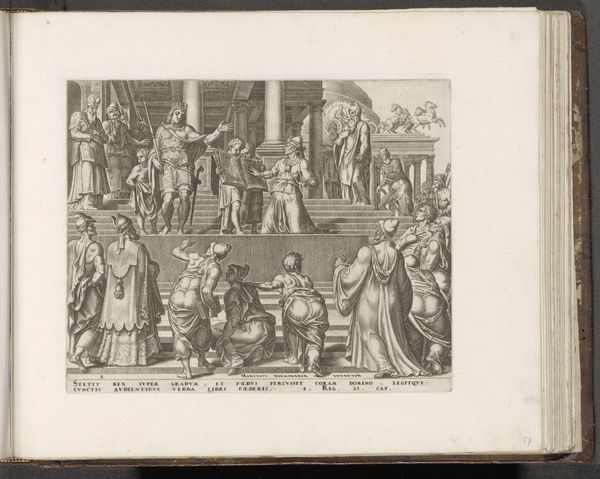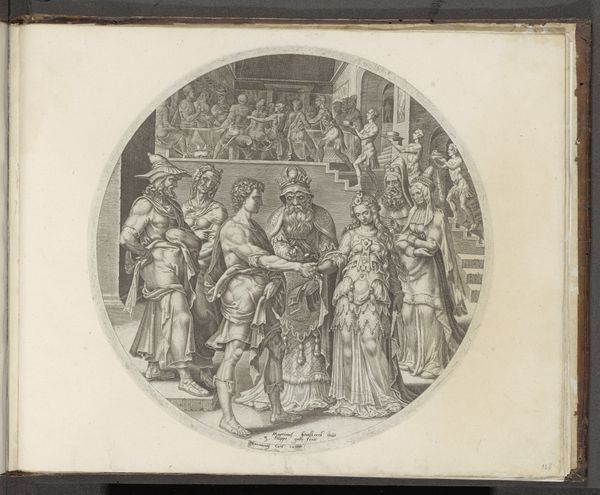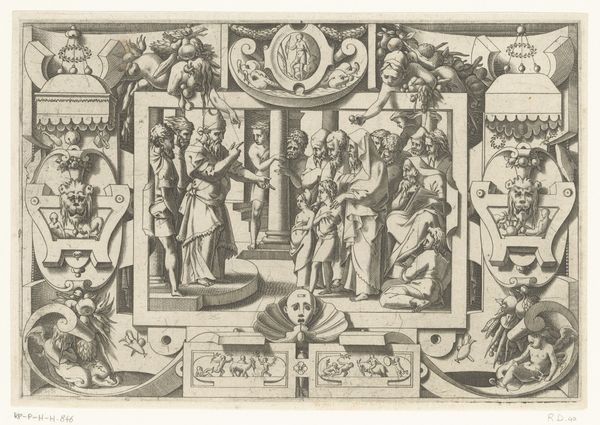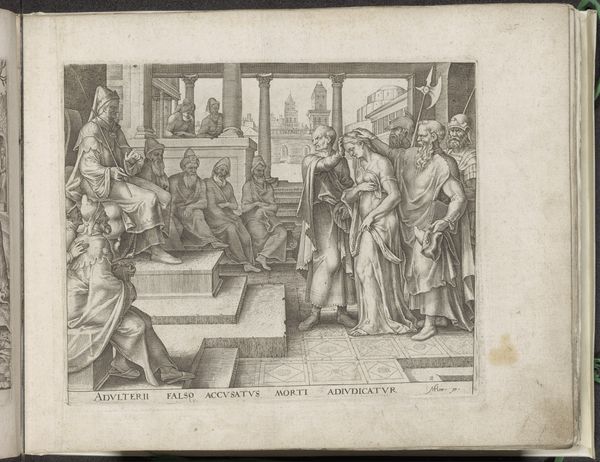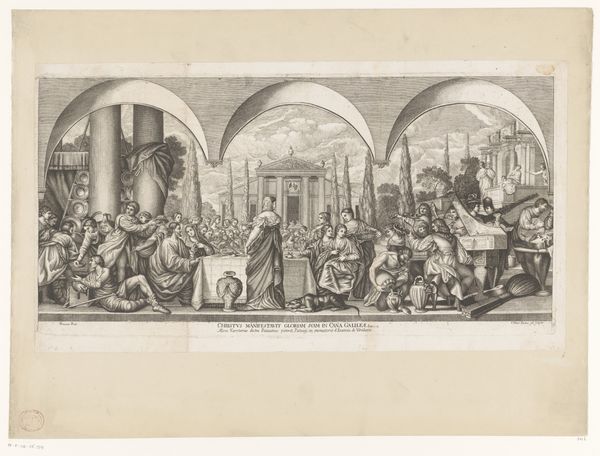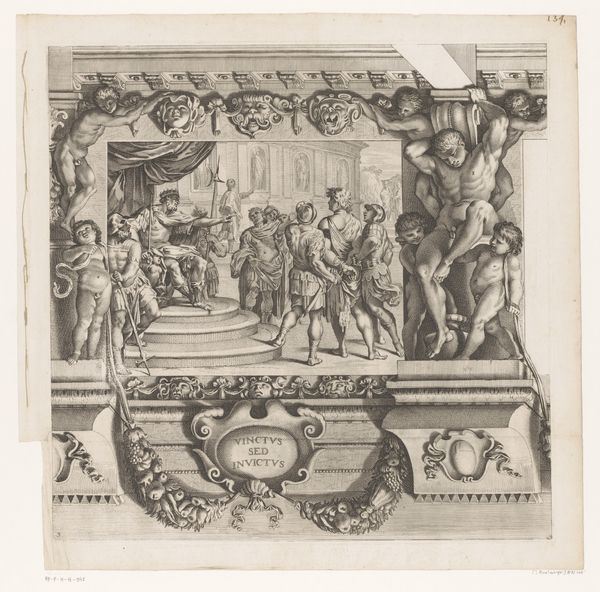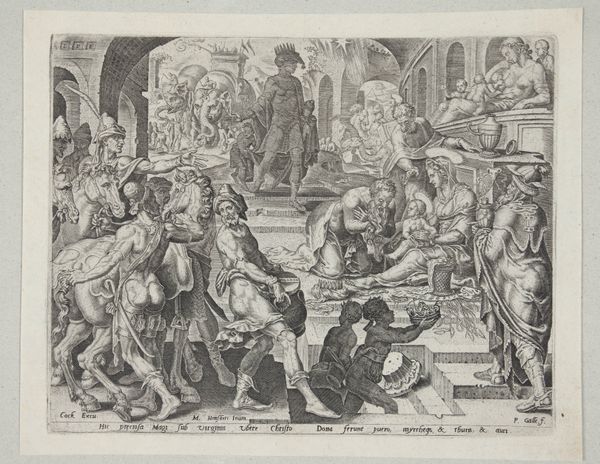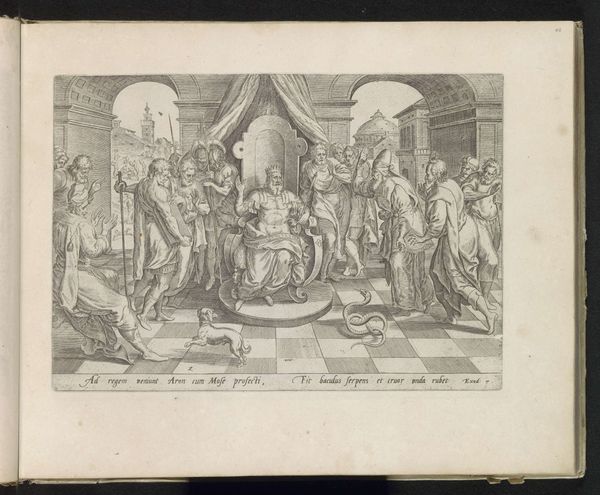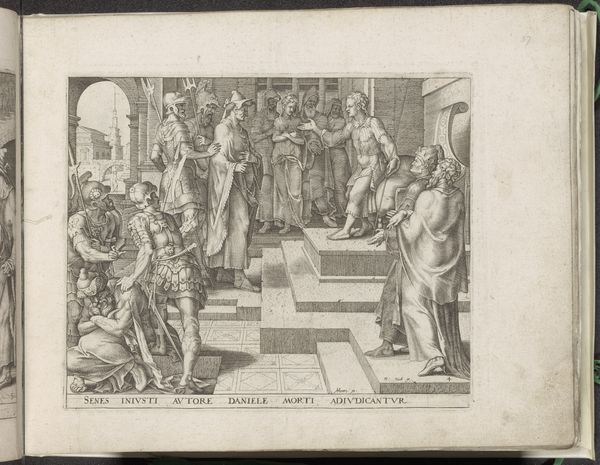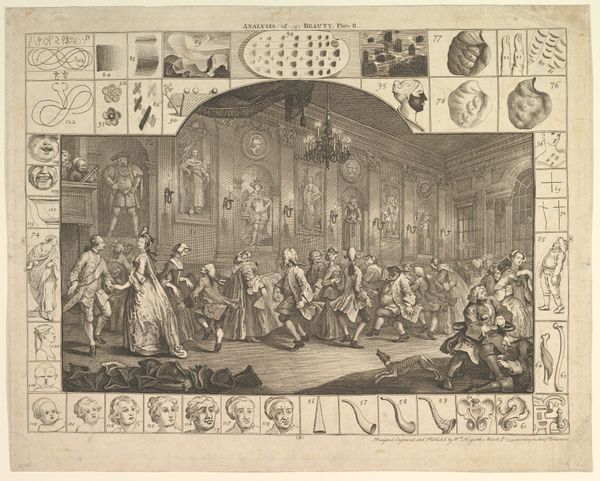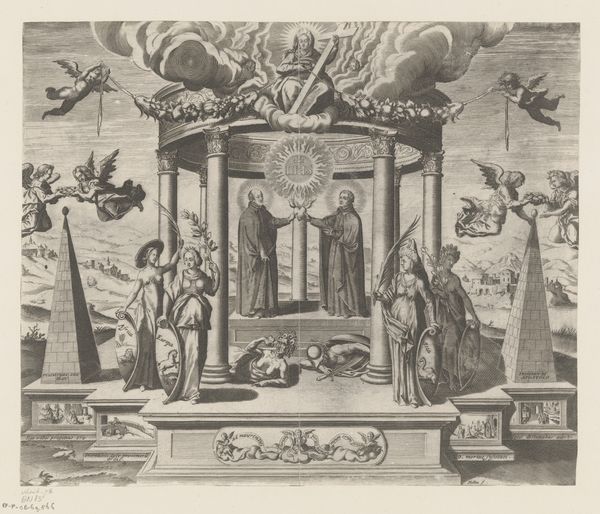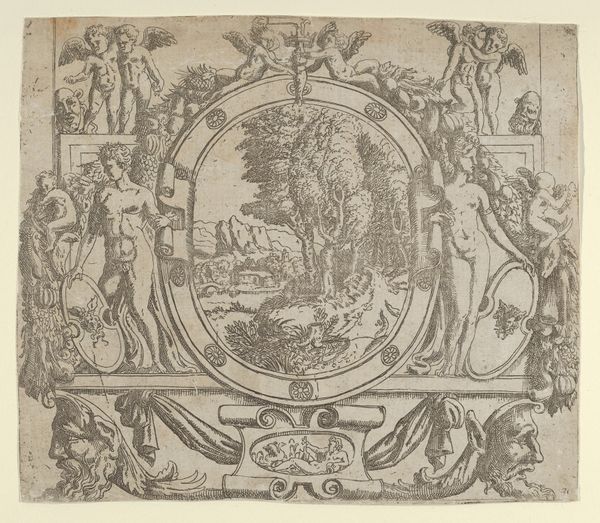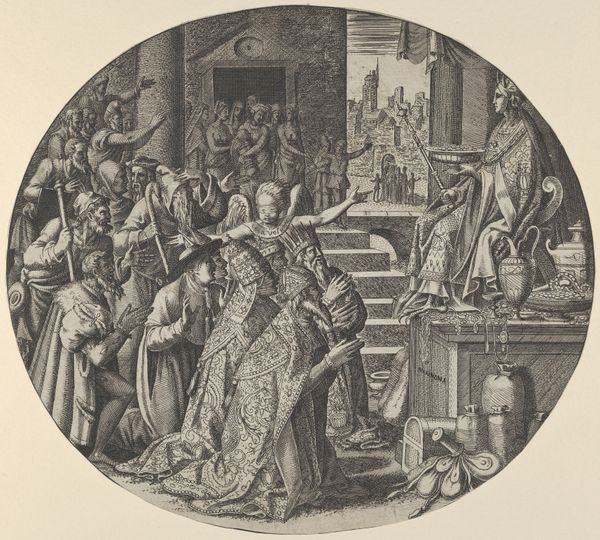
drawing, print, etching, engraving, architecture
#
drawing
#
medieval
#
narrative-art
# print
#
etching
#
figuration
#
11_renaissance
#
history-painting
#
engraving
#
architecture
Dimensions: Sheet (trimmed): 12 1/16 × 18 1/8 in. (30.6 × 46 cm)
Copyright: Public Domain
Editor: So, here we have "Avarice, from the 'Seven Deadly Sins'," created between 1542 and 1552 by Léon Davent. It's an engraving, etching, and drawing. Looking at the density of figures and detail, I'm struck by the intricate composition. What is your initial interpretation of this print? Curator: Immediately, I’m drawn to the use of line. Observe how Davent’s dense cross-hatching generates areas of dark tone, contrasting sharply with the light, blank paper. Notice how the architecture—the steps, the doorway—forms a visual framework, almost a stage for this dramatic display. It’s carefully constructed to guide our eye. Editor: I see what you mean. The architecture definitely creates a sense of depth. But the figures seem almost crammed in, vying for space. Curator: Precisely! The crowded composition generates a visual tension. This tension underscores the concept of avarice – an insatiable hunger. What compositional techniques reinforce this interpretation? Editor: Well, the way the figures reach out towards the central figure, maybe? And the little circular vignettes around the central scene – they feel like greed manifesting in different ways. Curator: Excellent observation. These vignettes are formally integrated through their circular framing, yet their disparate subjects – the extraction of resources, the acquisition of wealth – create a layered understanding of avarice. They highlight its diverse manifestations, reflecting its pervasive nature. It isn't merely a single act, but a system. Editor: That makes a lot of sense. I hadn't thought about the circular frames adding to that sense of pervasive quality. Thanks for pointing that out. Curator: It’s through the interplay of formal elements like line, composition, and structure that Davent conveys the complex nature of avarice, moving beyond simple representation to evoke a deeper understanding of its psychological and social implications.
Comments
No comments
Be the first to comment and join the conversation on the ultimate creative platform.
